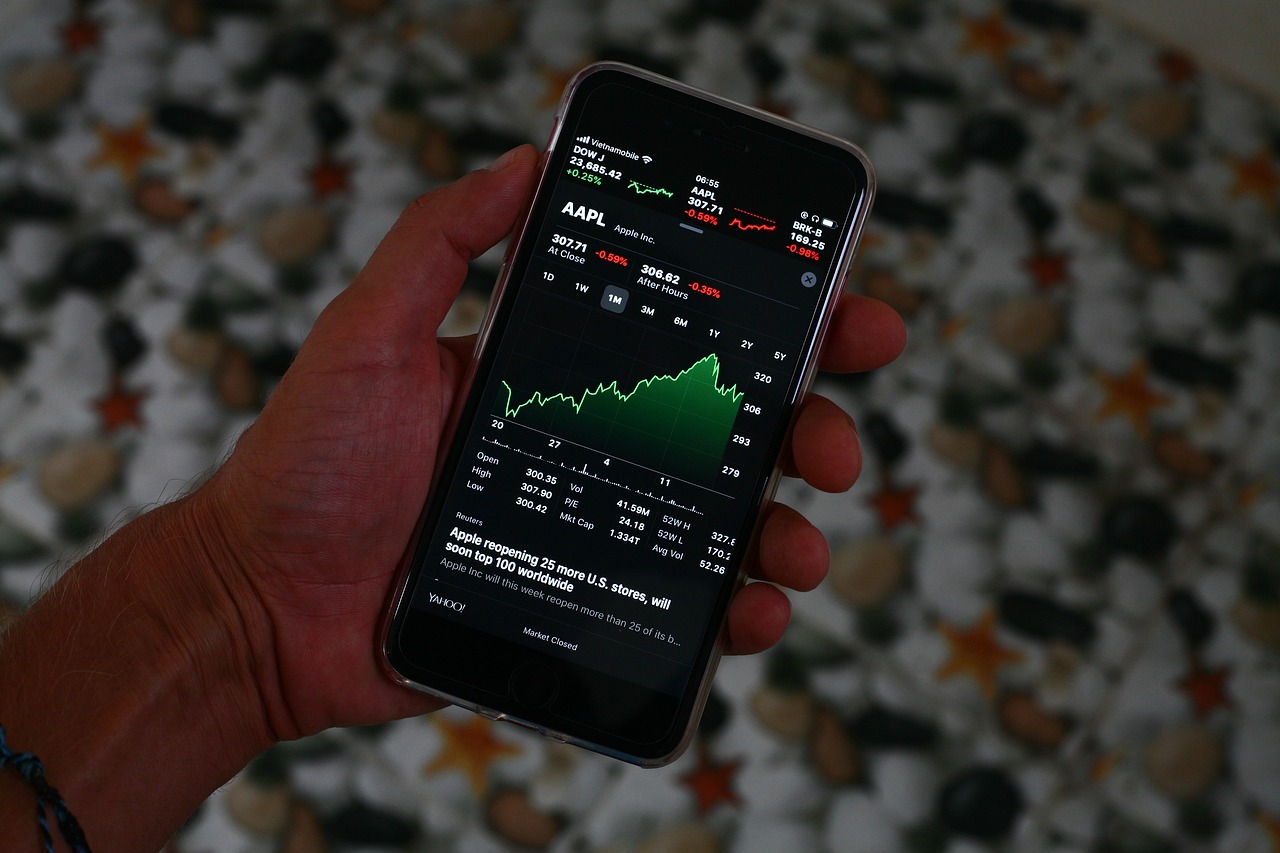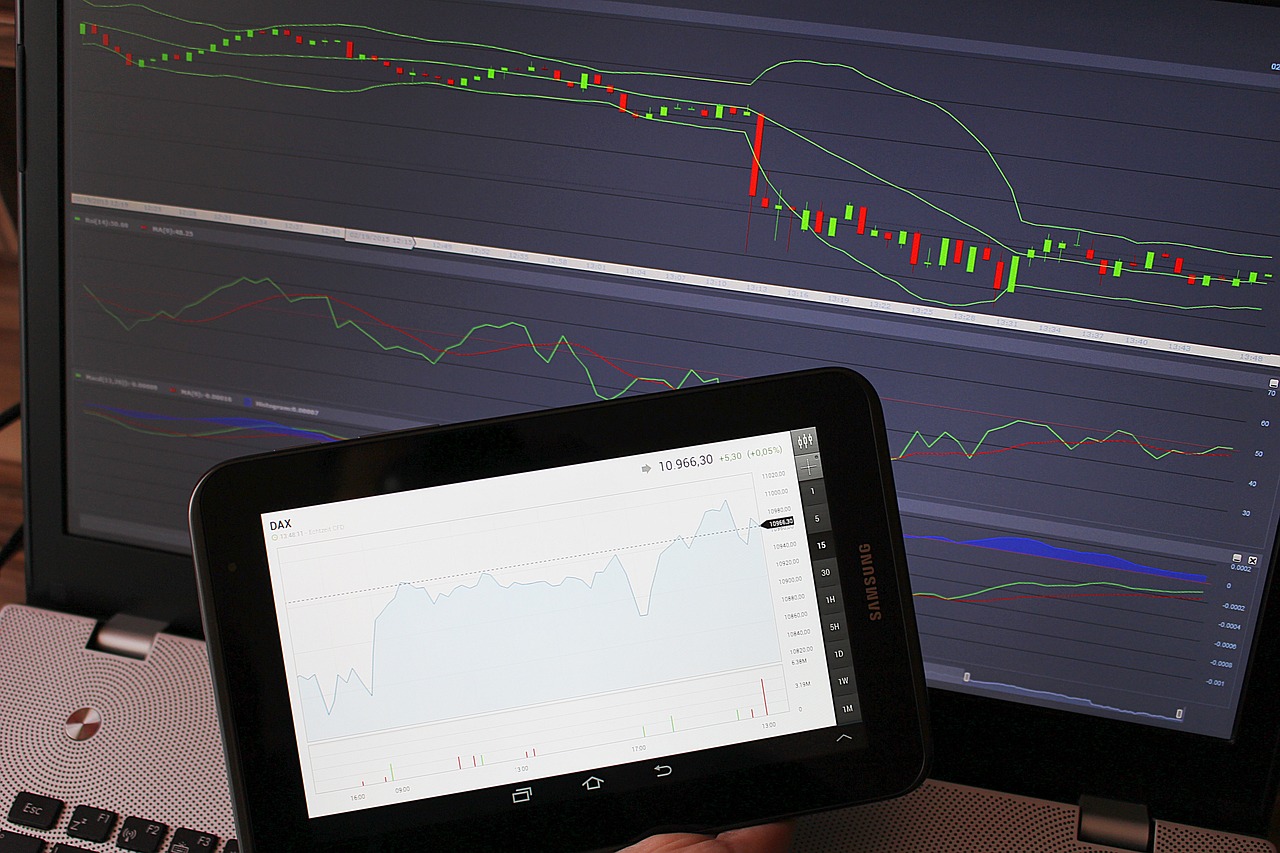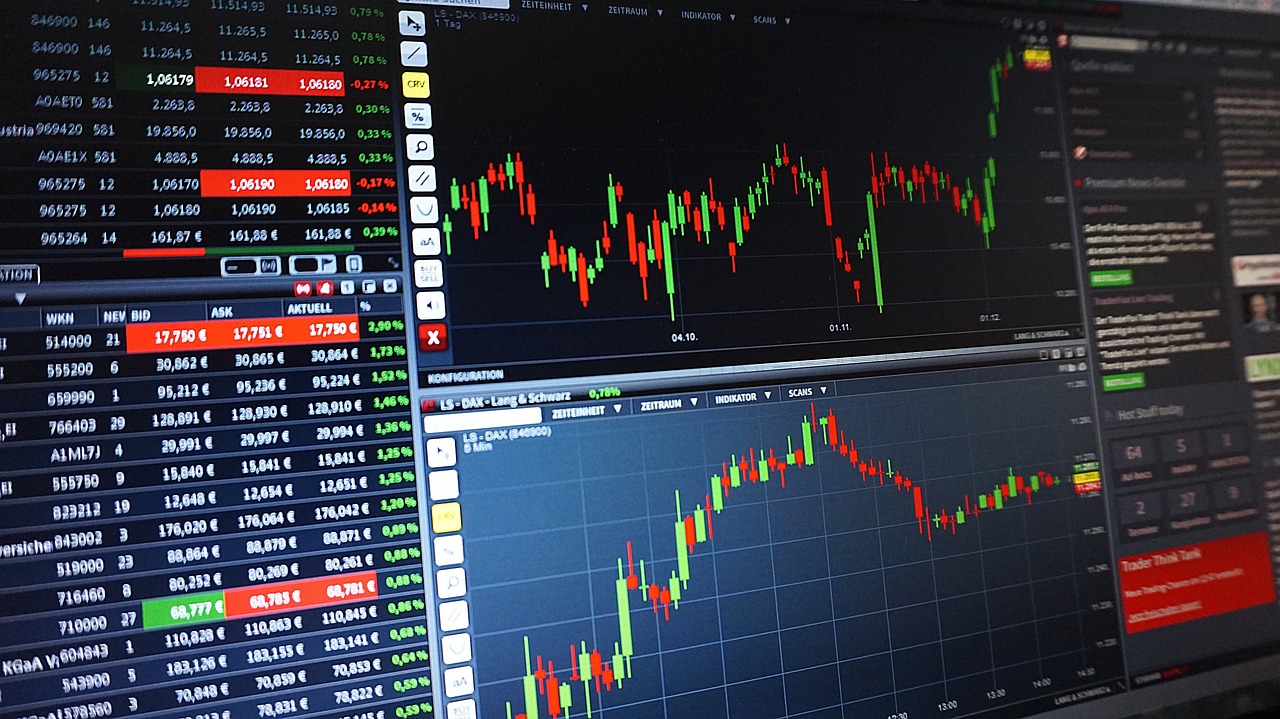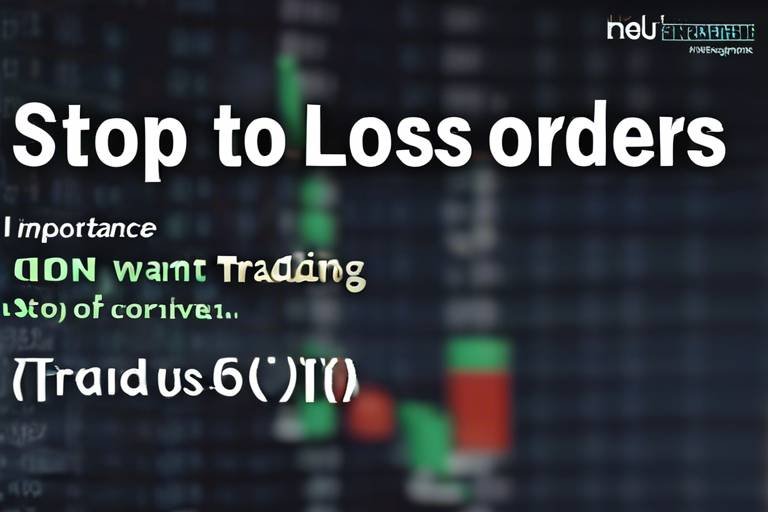The Importance of Stop-Loss Orders in Trading
In the unpredictable world of trading, where the markets can swing wildly from one moment to the next, having a safety net is crucial. Enter the stop-loss order, a powerful tool that can help traders navigate the turbulent waters of financial markets. A stop-loss order is like a guardian angel for your investments, automatically selling a security when it hits a predetermined price. This means that even if you’re not glued to your screen, your investments can still be protected from significant downturns. But what exactly makes stop-loss orders so vital for traders, and how can they transform your trading strategy? Let’s dive deep into the mechanics, benefits, and best practices of using stop-loss orders.
At its core, a stop-loss order is a simple yet effective instruction given to your broker. It tells them to sell a security when its price falls to a certain level. Imagine you’ve bought shares of a company at $100, and you’re worried about a potential dip. By placing a stop-loss order at $90, you’re instructing your broker to sell your shares if the price drops to that point. This way, you can limit your losses without having to constantly monitor market movements.
There are various types of stop-loss orders, including:
- Standard Stop-Loss: This is the most common type, where the order is executed once the stock hits the specified price.
- Trailing Stop-Loss: This order moves with the stock price, allowing you to lock in profits while still protecting against losses.
- Guaranteed Stop-Loss: This type ensures that your order will be executed at the specified price, regardless of market fluctuations.
Understanding these different types can help you choose the one that best fits your trading strategy.
Implementing stop-loss orders can drastically reduce the emotional stress that often accompanies trading. When the market is volatile, it’s easy to let fear or greed dictate your decisions. By having a stop-loss in place, you can take a step back and let the order do its job, which can lead to more rational and calculated trading decisions.
Effective risk management is crucial for successful trading. Stop-loss orders play a significant role in this aspect by allowing traders to define their risk levels upfront. This means you can enter a trade knowing exactly how much you’re willing to lose. It’s like having a personal trainer for your investments, helping you stay in shape financially.
We’ve all been there: the market dips, and suddenly you’re gripped by panic. Emotional decision-making can lead to poor trading outcomes. Stop-loss orders help mitigate this by keeping you disciplined. They act as a pre-set plan, ensuring that you stick to your strategy without being swayed by market noise.
One of the primary functions of stop-loss orders is to limit losses. By setting appropriate stop-loss levels, traders can protect themselves from significant downturns. Think of it as a safety belt in your car; it won’t prevent an accident, but it sure will minimize the damage.
Choosing the right strategy for stop-loss orders is vital for maximizing their effectiveness. Different traders may prefer different approaches based on their trading style and the market conditions. Here are a few strategies to consider:
- Percentage-Based Stop-Loss: Setting a stop-loss at a specific percentage below your purchase price.
- Support Level Stop-Loss: Placing a stop-loss just below a key support level, which can help protect against breakouts.
- Volatility-Based Stop-Loss: Adjusting your stop-loss based on market volatility to give your trades more room to breathe.
While stop-loss orders are beneficial, traders often make mistakes when using them. Here are some common pitfalls to watch out for:
Determining the appropriate stop-loss level can be challenging. Factors such as market volatility, the security’s price action, and your own risk tolerance should all be considered. Setting a stop-loss too tight may lead to premature selling, while setting it too loose can expose you to larger losses.
While stop-loss orders are helpful, over-reliance on them can be detrimental. They should not be your sole risk management tool. A balanced approach that combines stop-loss orders with other strategies, such as diversification and position sizing, can lead to more sustainable trading success.
Q: What is a stop-loss order?
A: A stop-loss order is an instruction to sell a security once it reaches a certain price, helping to limit losses.
Q: How do I set a stop-loss order?
A: You can set a stop-loss order through your trading platform by specifying the price at which you want the order to be executed.
Q: Can I change my stop-loss order?
A: Yes, you can modify your stop-loss order at any time before it is triggered.
Q: Are stop-loss orders guaranteed?
A: Not all stop-loss orders are guaranteed. Market conditions can affect execution, so it’s essential to understand the type of stop-loss order you are using.

Understanding Stop-Loss Orders
Stop-loss orders are a fundamental aspect of trading that every trader should familiarize themselves with. At its core, a stop-loss order is an instruction given to your broker to sell a security when it reaches a predetermined price. This mechanism acts as a safety net, helping traders manage risk and protect their investments from significant losses. Imagine you're driving a car down a winding road; a stop-loss order is like your seatbelt, keeping you secure in case of unexpected turns.
There are several types of stop-loss orders, each serving a unique purpose. The most common types include:
- Standard Stop-Loss Order: This order triggers a market sell order once the specified price is reached.
- Trailing Stop-Loss Order: This dynamic order moves with the market price, allowing traders to lock in profits while still protecting against losses.
- Stop-Limit Order: This order combines a stop-loss and a limit order, meaning it will only sell at a specified price or better after the stop price is reached.
Understanding how these orders function is crucial for effective trading. When you place a stop-loss order, you're essentially setting a safety line. If the market price drops to that line, your order is executed, and you exit the trade, ideally minimizing your potential losses. However, it's important to note that stop-loss orders do not guarantee an exact exit price, especially in fast-moving or volatile markets where prices can gap down.
Another critical aspect of stop-loss orders is their role in automating your trading strategy. By setting these orders in advance, you can remove emotional decision-making from the equation. This is particularly beneficial during periods of market volatility when fear and greed can cloud judgment. Think of stop-loss orders as a pre-planned exit strategy; they allow you to stick to your trading plan without getting swayed by the emotional rollercoaster of the market.
In conclusion, grasping the concept of stop-loss orders is essential for traders looking to safeguard their investments and enhance their trading strategies. They provide a structured approach to managing risk, allowing traders to focus on their overall trading goals rather than getting bogged down by emotional reactions to market fluctuations.

Benefits of Using Stop-Loss Orders
When it comes to trading, the emotional rollercoaster can be overwhelming. One moment, you’re riding high on profits, and the next, you’re staring at a plummeting stock. This is where stop-loss orders come into play, acting as your safety net in the unpredictable world of trading. By automatically selling a security when it hits a predetermined price, stop-loss orders can significantly reduce your risk and emotional stress. Let’s dive into the key advantages of using these powerful tools in your trading strategy.
First and foremost, stop-loss orders are a game-changer when it comes to risk management. Think of them as your personal bodyguard in the market. They help you define how much you’re willing to lose on a trade before you even enter it. This proactive approach ensures that you don't find yourself in a situation where a minor dip turns into a catastrophic loss. By setting a stop-loss order, you can maintain control over your trading capital, allowing you to stay in the game longer.
Another significant benefit is that stop-loss orders can help prevent emotional trading. Let’s face it: trading can stir up a whirlwind of emotions. Fear, greed, and excitement can cloud judgment, leading to impulsive decisions that often result in losses. With a stop-loss order in place, you can stick to your trading plan without being swayed by emotional impulses. It’s like having a GPS for your trading journey; it keeps you on track, even when the market tries to throw you off course.
Moreover, these orders are essential for limiting losses. Imagine you’ve invested in a stock that suddenly takes a nosedive. Without a stop-loss order, you might panic and sell at a loss that could have been avoided. By setting an appropriate stop-loss level, you can protect yourself from significant downturns. This not only helps you preserve your capital but also gives you the peace of mind to focus on your next trading opportunity without the burden of past losses weighing you down.
To illustrate the effectiveness of stop-loss orders, consider the following table that compares two traders: one who uses stop-loss orders and one who does not:
| Trader | Uses Stop-Loss Orders | Does Not Use Stop-Loss Orders |
|---|---|---|
| Initial Investment | $10,000 | $10,000 |
| Market Conditions | Volatile | Volatile |
| Losses After Market Dip | $1,500 (limited by stop-loss) | $3,500 (no limit) |
| Remaining Capital | $8,500 | $6,500 |
As you can see from the table, the trader who utilized stop-loss orders was able to preserve more capital despite facing the same volatile market conditions. This example underscores the importance of incorporating stop-loss orders into your trading strategy.
In summary, the benefits of using stop-loss orders are clear. They not only provide a safety net for your investments but also help you manage your emotions and limit potential losses. By integrating stop-loss orders into your trading approach, you can enhance your overall trading experience and make more informed decisions. So, the next time you enter a trade, ask yourself: are you prepared to protect your investment with a stop-loss order?
- What is a stop-loss order? A stop-loss order is an instruction to sell a security when it reaches a certain price, helping to limit potential losses.
- How do I set a stop-loss order? You can set a stop-loss order through your trading platform by specifying the price at which you want to sell the security.
- Can stop-loss orders guarantee profits? While stop-loss orders can help limit losses, they do not guarantee profits. Market conditions can change rapidly.
- Should I always use stop-loss orders? It’s generally advisable to use stop-loss orders as part of a comprehensive risk management strategy, but the decision ultimately depends on your trading style and risk tolerance.

Risk Management
Effective risk management is the backbone of successful trading, and stop-loss orders play a pivotal role in this strategy. Think of a stop-loss order as a safety net, designed to catch you before you fall too deep into the abyss of market volatility. By automatically selling a security when it reaches a predetermined price, stop-loss orders help to safeguard your capital from unexpected downturns. This is especially crucial in today's fast-paced trading environment, where prices can fluctuate wildly in just a matter of moments.
When it comes to risk management, the primary goal is to protect your investments while maximizing potential gains. Stop-loss orders help achieve this by setting clear boundaries. For instance, if you're trading a stock that you believe has strong potential but is known for its volatility, you might set a stop-loss order at a level that reflects your risk tolerance. This way, you can enjoy the thrill of trading without the constant fear of losing everything. In essence, stop-loss orders empower you to take calculated risks rather than reckless gambles.
Moreover, integrating stop-loss orders into your trading strategy can help you maintain a disciplined approach. It's easy to get swept up in the emotional tides of trading, where fear and greed can cloud your judgment. By having a stop-loss in place, you create a structured plan that allows you to stay focused on your trading goals. This discipline is crucial for long-term success, as it prevents you from making impulsive decisions that could lead to significant losses.
To illustrate the importance of stop-loss orders in risk management, consider the following table:
| Scenario | Without Stop-Loss | With Stop-Loss |
|---|---|---|
| Price Drop of 20% | Loss of Capital | Capital Preserved |
| Market Volatility | Emotional Stress | Peace of Mind |
| Long-Term Strategy | Potential for Major Losses | Controlled Risk |
As you can see, the difference between trading with and without stop-loss orders can be monumental. It's not just about limiting losses; it's about creating a safety net that allows you to trade confidently. Remember that successful trading isn't merely about making profits; it's also about protecting what you already have. By incorporating stop-loss orders into your risk management strategy, you can navigate the tumultuous waters of trading with greater assurance and resilience.
- What is a stop-loss order? A stop-loss order is an instruction to sell a security when it reaches a certain price, helping to limit potential losses.
- How do I determine the right stop-loss level? Consider factors such as market volatility, your risk tolerance, and the overall strategy you are employing.
- Can stop-loss orders guarantee profits? No, while they help limit losses, they do not guarantee profits. They are a tool for risk management.
- Should I use stop-loss orders for all my trades? It's advisable to use them, but the strategy might vary based on your trading style and market conditions.

Preventing Emotional Trading
Emotions can be a trader's worst enemy. When the market takes a turn, it's all too easy to let fear and greed dictate your decisions. Imagine standing on a rollercoaster, feeling the rush of adrenaline as you ascend, only to plummet down without warning. That’s what trading feels like without a solid plan in place. This is where stop-loss orders come into play, acting as a safety harness that keeps you secure during those wild market swings.
By implementing stop-loss orders, traders can create a structured approach to their trading strategies, which helps to mitigate emotional responses. When you know that your losses are capped at a certain level, it instills a sense of confidence. You’re less likely to react impulsively when prices fluctuate. Instead of panicking and selling at a loss, you can stick to your plan, knowing that your stop-loss order will trigger an automatic sale if the market moves against you.
Let’s break it down further. Here are a few ways stop-loss orders help prevent emotional trading:
- Predefined Rules: Setting a stop-loss order forces you to establish rules before entering a trade. This helps to remove the emotional aspect of decision-making when the market is volatile.
- Reduced Second-Guessing: With a stop-loss in place, you can avoid the urge to second-guess your trades. You know that if the price hits your stop-loss level, it’s time to exit, and you can move on without lingering doubts.
- Encourages Discipline: Having a stop-loss order encourages discipline in your trading. It’s like having a coach who keeps you in check, ensuring you stick to your game plan.
Moreover, emotional trading often leads to a cycle of regret and anxiety. For instance, if you sell a stock out of fear only to see it rebound shortly after, you might experience regret. This could lead to revenge trading, where you impulsively buy back at a higher price, hoping to recoup your losses quickly. A stop-loss order helps break this cycle by giving you a clear exit strategy, allowing you to walk away without the emotional baggage.
In summary, stop-loss orders are not just about protecting your capital; they are also about maintaining your mental well-being as a trader. By reducing emotional trading, you can focus on your strategy and make more rational decisions, ultimately leading to better trading outcomes. Remember, in the world of trading, it’s not just about how much you make—it's also about how well you manage your emotions and your capital.
Q: What is a stop-loss order?
A: A stop-loss order is an instruction to sell a security when it reaches a specified price, helping to limit potential losses.
Q: How do stop-loss orders help with emotional trading?
A: By setting predefined exit points, stop-loss orders help traders stick to their plans and avoid impulsive decisions driven by fear or greed.
Q: Can I adjust my stop-loss order after placing it?
A: Yes, most trading platforms allow you to modify your stop-loss order as market conditions change or as your strategy evolves.
Q: Should I always use stop-loss orders?
A: While stop-loss orders can be beneficial, it's essential to consider your trading strategy and risk tolerance. They should be part of a broader risk management plan.

Limiting Losses
When it comes to trading, one of the biggest fears for any investor is the dreaded loss. Imagine you're on a roller coaster, and you’re heading straight down. That gut-wrenching feeling is akin to watching your investments plummet without any safety net. This is where stop-loss orders come into play, acting as your safety harness. By setting a predetermined price at which your securities will be sold, you can effectively limit your losses and protect your hard-earned capital.
The beauty of stop-loss orders lies in their simplicity and effectiveness. By automatically executing a sell order when your asset hits a certain price, you can minimize potential losses without having to monitor the market constantly. Think of it as a fire alarm in your house; you might not want to think about the possibility of a fire, but having that alarm ensures that you’re alerted before things get out of hand.
To illustrate this point further, let’s consider a hypothetical scenario. Suppose you purchase shares of a tech company at $100. You set a stop-loss order at $90. If the stock price drops to $90, your shares will automatically be sold, limiting your loss to just $10 per share. Without this order, you might have held onto the stock, hoping for a rebound, only to watch it plummet to $70, resulting in a much larger loss of $30 per share.
However, it's crucial to set your stop-loss levels wisely. Here are a few factors to consider when determining the right stop-loss price:
- Market Volatility: In a volatile market, prices can swing dramatically. Setting a stop-loss too close to the current price may result in premature selling.
- Support Levels: Identify key support levels where the price has historically bounced back. Setting your stop-loss just below these levels can help avoid unnecessary losses.
- Risk Tolerance: Understand your own risk appetite. If you can’t handle losing more than a certain percentage of your investment, set your stop-loss accordingly.
In conclusion, limiting losses through stop-loss orders is not just a defensive strategy; it’s an essential part of a well-rounded trading approach. By implementing these orders, traders can not only safeguard their investments but also gain the confidence to make decisions without the paralyzing fear of losing everything. So, the next time you enter a trade, remember that a well-placed stop-loss order can be your best friend in the unpredictable world of trading.
Q: What is a stop-loss order?
A: A stop-loss order is an instruction to sell a security when it reaches a specific price, designed to limit an investor's loss on a position.
Q: How do I set a stop-loss order?
A: You can set a stop-loss order through your brokerage platform by specifying the price at which you want to sell your asset.
Q: Can stop-loss orders guarantee that I won't lose money?
A: While stop-loss orders can significantly reduce potential losses, they do not guarantee that you won't incur any losses, especially in fast-moving markets.
Q: Should I always use stop-loss orders?
A: It depends on your trading strategy and risk tolerance. While they can be beneficial, some traders prefer to use other methods of risk management.

Strategies for Implementing Stop-Loss Orders
When it comes to trading, having a solid strategy for implementing stop-loss orders can make all the difference between a successful trade and a costly mistake. Think of stop-loss orders as your personal safety net, ready to catch you when the market throws you a curveball. But how do you effectively weave these orders into your trading strategy? Let's dive in!
First and foremost, it's essential to understand that not all stop-loss orders are created equal. There are several strategies traders can adopt, and the right one often depends on their individual trading style and market conditions. For instance, a trader who prefers a more aggressive approach might opt for a tighter stop-loss, while a more conservative trader may choose to set theirs further away from the current price. This distinction can be crucial in determining how well your stop-loss order performs.
One effective approach is to use the Percentage Method. This strategy involves setting your stop-loss order at a specific percentage below the entry price. For example, if you buy a stock at $100 and decide to set a stop-loss at 10%, your order would trigger if the price drops to $90. This method is straightforward and allows you to maintain a consistent risk level across different trades.
Another popular strategy is the Support and Resistance Method. Here, traders analyze historical price levels to identify key support and resistance points. By placing a stop-loss just below a significant support level, you can protect yourself from potential downturns while allowing for some price fluctuation. Conversely, if you're shorting a stock, placing your stop-loss just above a resistance level can help mitigate losses if the price unexpectedly rises.
Additionally, traders can consider using the ATR (Average True Range) Method. This technique involves calculating the average volatility of a security over a certain period and setting the stop-loss order based on that volatility. By using the ATR, you can avoid getting stopped out too early during normal price fluctuations, while still protecting yourself from larger, unexpected moves.
It's also worth mentioning the importance of trailing stop-loss orders. These dynamic orders automatically adjust with the market price, allowing traders to lock in profits while still providing a safety net. For example, if you set a trailing stop-loss at 5%, and the stock moves up to $120, your stop-loss will adjust to $114, ensuring you capture gains while still protecting against a downturn.
However, no strategy is foolproof. It's vital to regularly review and adjust your stop-loss orders as market conditions change. This flexibility can significantly enhance your trading performance. By continuously analyzing your trades and the market, you can refine your approach and improve your chances of success.
In conclusion, the right strategy for implementing stop-loss orders can vary widely among traders. Whether you choose the percentage method, support and resistance levels, ATR, or trailing stop-loss orders, the key is to find a method that aligns with your trading style and risk tolerance. Remember, trading is not just about making profits; it's about managing risks effectively. So, take the time to develop a solid strategy for your stop-loss orders, and you'll be better equipped to navigate the ups and downs of the market.
- What is a stop-loss order? A stop-loss order is an instruction to sell a security when it reaches a specified price, helping to minimize potential losses.
- How do I determine the best stop-loss level? The best stop-loss level depends on your trading strategy, market conditions, and your risk tolerance. Consider using methods like percentage or support and resistance levels.
- Can stop-loss orders guarantee that I won't lose money? No, while stop-loss orders can help limit losses, they cannot guarantee that you won't lose money, especially in volatile markets where prices can gap down.
- Should I use a fixed stop-loss level? It's often better to adapt your stop-loss levels based on market conditions and volatility rather than relying solely on fixed levels.

Common Mistakes to Avoid
When it comes to trading, even the most seasoned traders can stumble upon pitfalls, especially when using stop-loss orders. Understanding these common mistakes is crucial for anyone looking to enhance their trading strategy. One major mistake is setting stop-loss levels without considering the market volatility. If you set your stop-loss too close to the current price, you might find yourself exited from a trade due to normal market fluctuations. Think of it like trying to catch a butterfly; if you reach out too quickly, you might scare it away. Instead, take your time and set levels that account for the natural ebb and flow of the market.
Another common error is the over-reliance on stop-loss orders. While these orders are incredibly useful, they shouldn't be your only line of defense. Relying solely on them can lead to a false sense of security. Imagine driving a car while only looking in the rearview mirror; you might miss what's right in front of you! It's vital to integrate stop-loss orders into a broader risk management strategy that includes diversification and position sizing.
Additionally, many traders fail to adjust their stop-loss orders as market conditions change. For instance, if a stock is on an upward trend, you might need to trailing stop-loss to lock in profits while still giving the trade room to grow. Neglecting to adjust your stop-loss can lead to missed opportunities or unnecessary losses. To illustrate this, consider a plant that needs to be repotted as it grows. If you leave it in the same pot, it will eventually become root-bound and stop thriving.
Lastly, not having a clear plan for when to exit a trade can lead to impulsive decisions. Traders often panic during market downturns and may decide to exit a position without following their predetermined stop-loss strategy. This can be detrimental to their overall trading performance. It's essential to set clear guidelines and stick to them, even when emotions run high. A well-thought-out exit strategy can be your safety net during turbulent times.
In summary, avoiding these common mistakes can significantly improve your trading outcomes. By understanding the nuances of stop-loss orders and incorporating them into a comprehensive trading strategy, you can navigate the markets with greater confidence and success. Remember, trading is not just about making the right moves; it's also about avoiding the wrong ones.
- What is a stop-loss order? A stop-loss order is an instruction to sell a security when it reaches a specific price, helping to limit potential losses.
- How do I determine the right stop-loss level? Consider factors such as market volatility, your risk tolerance, and the specific characteristics of the security you are trading.
- Can stop-loss orders guarantee profits? No, while they can help limit losses, they cannot guarantee profits due to market unpredictability.
- Should I use stop-loss orders for all my trades? It's advisable to use them as part of a broader risk management strategy, but not every trade may require a stop-loss order.

Setting Stop-Loss Levels
Determining the appropriate stop-loss level can often feel like trying to hit a moving target. It’s not just about picking a number and hoping for the best; it requires a blend of analysis, strategy, and a bit of intuition. Think of it as setting a safety net beneath a tightrope walker. You want it to be close enough to catch them if they stumble, but not so close that it interferes with their balance. So, how do you find that sweet spot?
First, consider the market volatility. In a highly volatile market, prices can swing wildly, making it essential to set your stop-loss level further away from the current price to avoid being triggered by normal market fluctuations. For instance, if you're trading a stock that typically moves 5% in a day, setting a stop-loss at 2% might not provide the cushion you need. Instead, you might look at a stop-loss level of around 6% or 7% to give your trade room to breathe.
Another critical factor to consider is your own risk tolerance. Each trader has a different threshold for what they can handle in terms of losses. Ask yourself: how much of your capital are you willing to risk on a single trade? A common rule of thumb is to risk no more than 1-2% of your total trading capital on any given position. This approach not only helps in maintaining your overall portfolio health but also allows you to set your stop-loss levels with a clear mind, reducing the emotional weight of your decisions.
Additionally, use technical analysis to inform your stop-loss placement. Look for key support and resistance levels on the chart. A stop-loss placed just below a significant support level might protect you from a downturn while still giving your trade a chance to succeed. For example, if a stock has consistently bounced back at a certain price point, placing your stop-loss just below that level could be a smart strategy. It’s like placing a safety net right above a trampoline; you want to catch the fall, but you also want to give yourself a chance to bounce back.
Here’s a simple table to illustrate the relationship between market volatility, risk tolerance, and stop-loss levels:
| Market Condition | Suggested Stop-Loss Level | Risk Tolerance |
|---|---|---|
| Low Volatility | 1-3% | 1% of capital |
| Moderate Volatility | 4-6% | 1-2% of capital |
| High Volatility | 7-10% | 2% of capital |
Finally, keep in mind that setting stop-loss levels isn’t a one-time task. It's essential to continually reassess and adjust your stop-loss orders as the market conditions change or as your trade progresses. As you gain more experience, you’ll develop a better sense of how to adapt your strategies, much like a seasoned sailor adjusting their sails to the shifting winds. Remember, the goal is to protect your capital while allowing your trades the space they need to flourish.
- What is a stop-loss order? A stop-loss order is an instruction to sell a security when it reaches a certain price, aimed at limiting an investor's loss on a position.
- How do I determine the right stop-loss level? Consider market volatility, your risk tolerance, and technical analysis to set appropriate stop-loss levels.
- Can I adjust my stop-loss order? Yes, it's advisable to regularly reassess and adjust your stop-loss orders based on market conditions and trade performance.
- What happens if my stop-loss order is triggered? If your stop-loss order is triggered, your security will be sold at the next available market price, potentially limiting your losses.

Over-Reliance on Stop-Loss Orders
While stop-loss orders are undoubtedly powerful tools in a trader's arsenal, it’s crucial to recognize that over-reliance on them can lead to a false sense of security. Imagine driving a car with a seatbelt but neglecting to pay attention to the road; the seatbelt will protect you in an accident, but it won't prevent one from happening. Similarly, stop-loss orders can safeguard your investments, but they cannot replace the need for comprehensive market analysis and sound trading strategies.
One of the pitfalls of depending too heavily on stop-loss orders is the potential for market volatility to trigger these orders prematurely. For instance, if a trader sets a stop-loss order too close to the current price, a minor fluctuation in the market could result in an unwanted sell-off. This scenario is akin to setting a security alarm that goes off with the slightest breeze—while the intention is to protect, the execution may lead to unnecessary panic. Therefore, it’s essential to find a balance when determining stop-loss levels.
Moreover, relying solely on stop-loss orders can lead to complacency. Traders may neglect to conduct thorough research or stay updated on market trends, believing that their stop-loss orders will handle any potential losses. However, the market is unpredictable, and external factors can influence price movements dramatically. For example, significant news events or economic shifts can cause prices to gap down, bypassing stop-loss orders entirely. This phenomenon highlights the importance of staying engaged with the market rather than becoming overly dependent on automated tools.
To avoid the trap of over-reliance, traders should consider integrating stop-loss orders with other risk management techniques. Here are a few strategies to enhance your trading approach:
- Diversification: Spread your investments across various assets to mitigate risk.
- Position Sizing: Adjust your trade size based on your risk tolerance and market conditions.
- Regular Review: Continuously assess your trading strategy and market conditions to make informed decisions.
In conclusion, while stop-loss orders are invaluable for protecting investments, they should not be the only line of defense. A holistic approach that combines various strategies and a vigilant mindset can significantly enhance a trader's success. Remember, the goal is not just to survive the market but to thrive in it, and that requires a proactive, well-rounded strategy.
1. What is a stop-loss order?
A stop-loss order is an instruction to sell a security when it reaches a specified price, helping to limit potential losses.
2. Can stop-loss orders guarantee protection against losses?
No, while stop-loss orders can help manage risk, they cannot guarantee protection, especially in volatile markets where prices may gap past the stop-loss level.
3. How should I determine my stop-loss level?
Setting a stop-loss level should consider market volatility, your risk tolerance, and the specific characteristics of the asset being traded.
4. Is it advisable to use only stop-loss orders for risk management?
No, using a combination of strategies, including diversification and position sizing, is recommended for more effective risk management.
Frequently Asked Questions
- What is a stop-loss order?
A stop-loss order is a trading tool that automatically sells a security when it reaches a specified price. This helps traders minimize losses and manage risk effectively in volatile markets.
- How do I set a stop-loss order?
To set a stop-loss order, you need to determine the price level at which you want to sell the security. Consider factors like market volatility, your risk tolerance, and the overall trading strategy you are using.
- What are the different types of stop-loss orders?
There are several types of stop-loss orders, including standard stop-loss orders, trailing stop-loss orders, and guaranteed stop-loss orders. Each type has its own mechanics and can be used based on your trading style and market conditions.
- Can stop-loss orders guarantee profits?
No, stop-loss orders cannot guarantee profits. They are designed to limit losses, but market conditions can sometimes lead to slippage, which means the execution price may be different from the stop-loss price.
- How do stop-loss orders help with emotional trading?
Stop-loss orders can help reduce emotional trading by providing a clear exit strategy. This allows traders to stick to their plans and avoid impulsive decisions during market fluctuations.
- What are common mistakes when using stop-loss orders?
Common mistakes include setting stop-loss levels too tight, which can lead to premature selling, or relying solely on stop-loss orders without a comprehensive risk management strategy.
- Should I rely solely on stop-loss orders for risk management?
No, while stop-loss orders are a useful tool, they should not be the only method of risk management. A balanced approach that includes various strategies and tools is essential for effective trading.
- How can I adjust my stop-loss orders?
You can adjust your stop-loss orders based on changes in market conditions, your trading strategy, or your risk tolerance. Regularly reviewing and modifying your stop-loss levels can enhance your risk management.


















